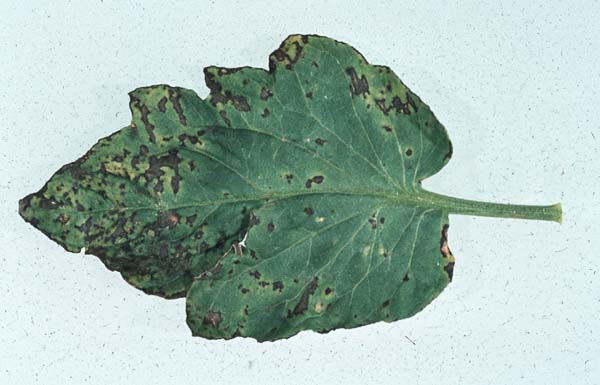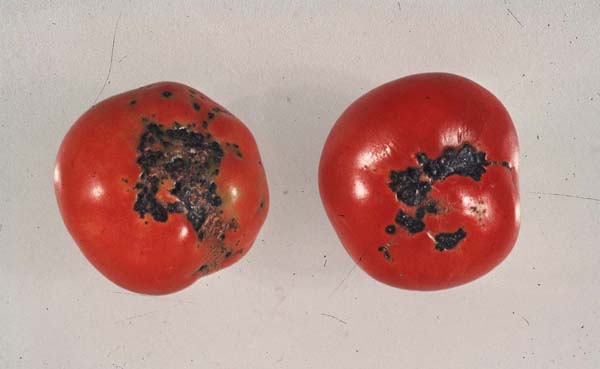Bacterial spot of tomato
Xanthomonas vesicatoria (synonym Xanthomonas campestris pv. vesicatoria)
Profile
Bacterial fruit spot disease of tomato is caused by the bacterium Xanthomonas vesicatoria . Infection results in brown spots on leaves and fruit and can cause significant crop losses. Xanthomonas vesicatoria is listed as a Union regulated non-quarantine pest.
Damage symptoms
Infections on leaves initially show dark green, watery spots on the undersides of the leaves, from which up to 3 mm large, sunken, round or irregular spots form. These turn gray or brown and are eventually also visible on the upper sides of the leaves. In some cases, the spots merge into elongated lesions. In severe infestations, the healthy tissue located between the infection sites is killed and breaks out of the leaves.
Slightly raised brown spots with a rough surface, 3 to 6 mm in size, form on the fruit. They are initially surrounded by a yellow halo.


Propagation and transmission
The bacteria cannot survive long in soil, but they persist in weeds of the nightshade genus(Solanum, e.g. Solanum nigrum) and on infected plant residues. The bacteria are spread by splashing water droplets and enter plants through stomata. On fruits, the infections happen through wounds (e.g. after insect bites, cracks,...). The disease is also transmitted with the seeds.
Phytosanitary status
Xanthomonas vesicatoria is listed as a Union regulated non-quarantine pest and is transmitted through certain planting material. The presence of such pests leads to unacceptable economic consequences with regard to the intended marketing of the planting material. The import and movement within the EU are therefore uniformly regulated for specific seed and planting material.
Last updated: 22.10.2024
automatically translated